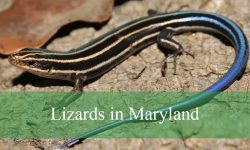Oklahoma, with its diverse landscapes ranging from lush green grasslands to rugged hills, is home to many unique snake species. The snakes in Oklahoma are not only abundant in number but also varied in shape and color.
From rattlesnakes to water snakes, exploring the lives of these creatures helps us understand more about the ecosystem of this state and their important roles in nature.
Let’s delve into the characteristic snake species and their presence in various habitats across Oklahoma.
Venomous snakes in Oklahoma
Western Pygmy Rattlesnake
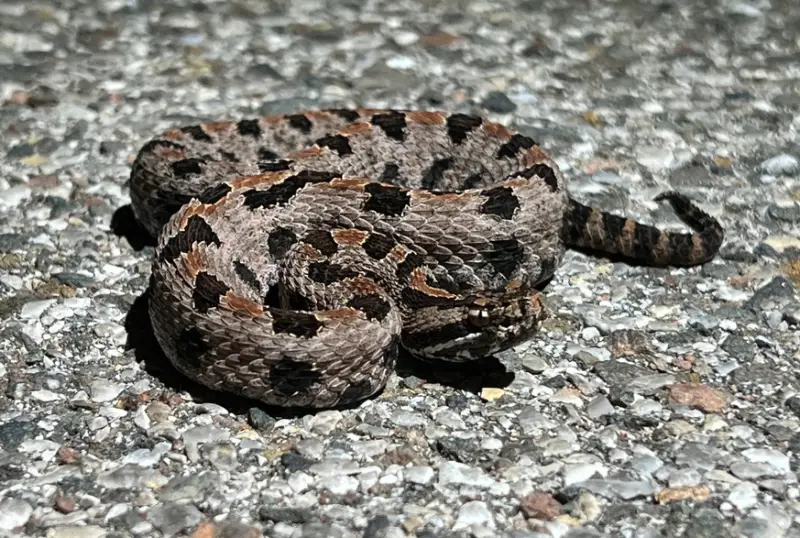
The western pygmy rattlesnake is a small, venomous pit viper found in the southeastern portion of Oklahoma. These snakes typically have a light brown, tan, or grayish-brown color, with dark brown to black oval-shaped blotches running down their spine, and smaller blotches on their sides. Some individuals also display reddish-brown or orange scales between the spine blotches.
They can grow up to 24 inches (61 cm) in length and are often found around cypress ponds, lakes, marshes, and pine-hardwood forests.
Timber Rattlesnake
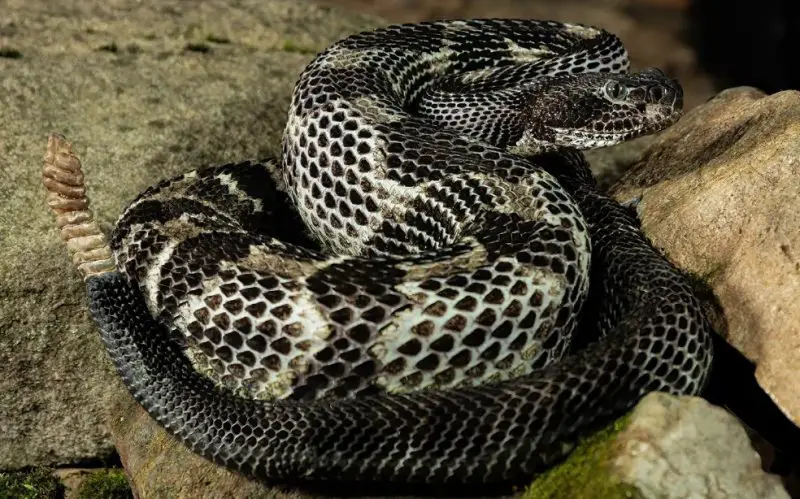
The timber rattlesnake, also known as the canebrake rattlesnake, is a long pit viper species found throughout the eastern U.S., including southeastern Oklahoma and some northeastern counties like Osage, Pawnee, and Payne.
These snakes typically have a golden brown to grayish-brown color with dark zig-zag or chevron-shaped bands bordered by lighter scales. The color often darkens toward the tail. Timber rattlesnakes can grow up to 54 inches (137 cm) in length and are known for their potent venom and distinctive rattle.
Copperhead
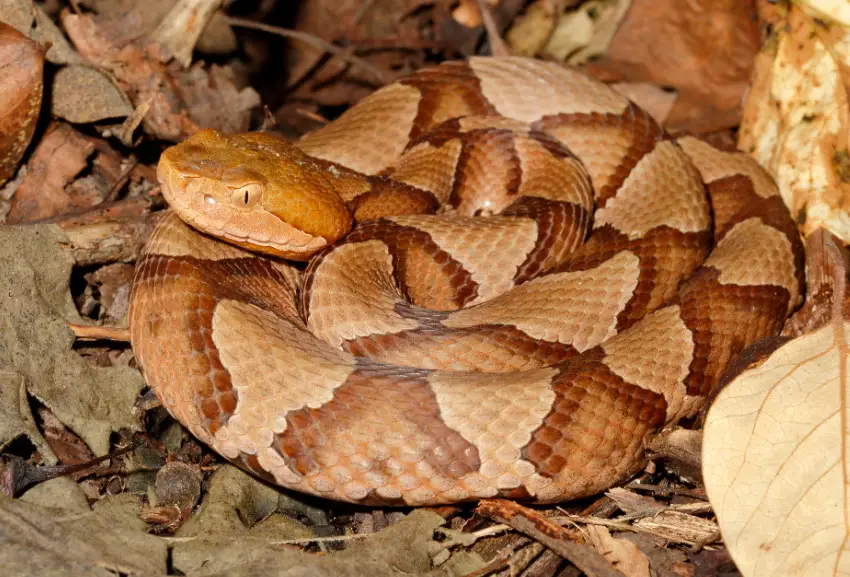
The copperhead is a medium-sized, venomous snake native to eastern and central Oklahoma. As a pit viper, it has heat-sensing pits between its eyes and nostrils, aiding in hunting. These snakes typically measure 2-3 feet in length and are light brown to tan with distinctive darker hourglass-shaped bands along their backs.
Copperheads play a crucial role in controlling rodent populations by preying on various rodents and insects, helping to maintain ecological balance.
Cottonmouth
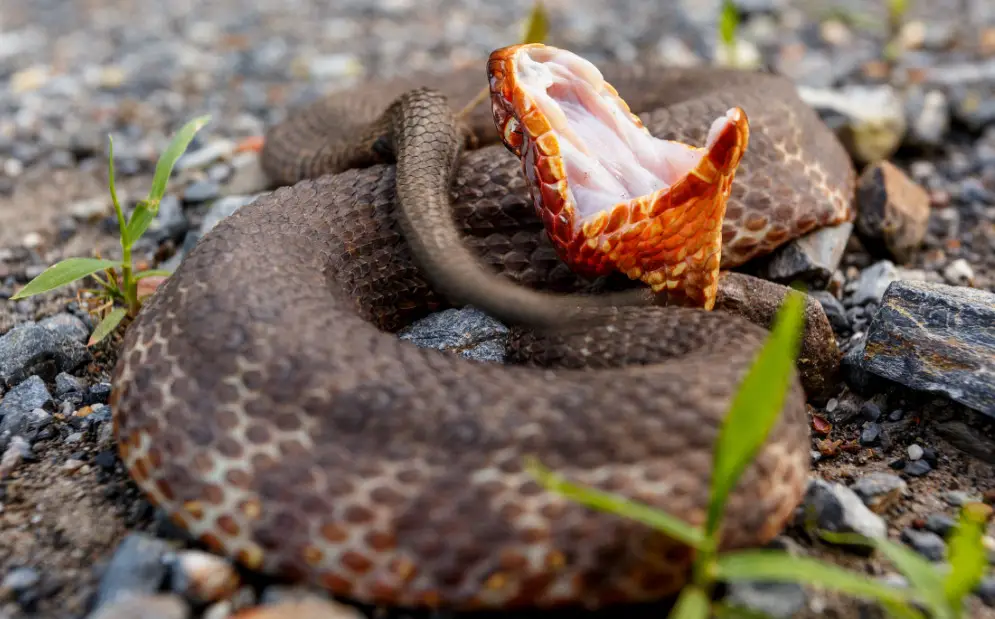
The cottonmouth, or water moccasin, is the only venomous water snake in Oklahoma, commonly found in swamps, marshes, ponds, and slow-moving bodies of water, particularly in the southeastern region of the state.
These snakes can reach up to 48 inches (122 cm) in length and have thick, heavy bodies. Juveniles often display more vibrant patterns, while adults have a light to dark brown background with darker bands. Cottonmouths are well-adapted to aquatic environments, making them formidable predators.
Western Massasauga
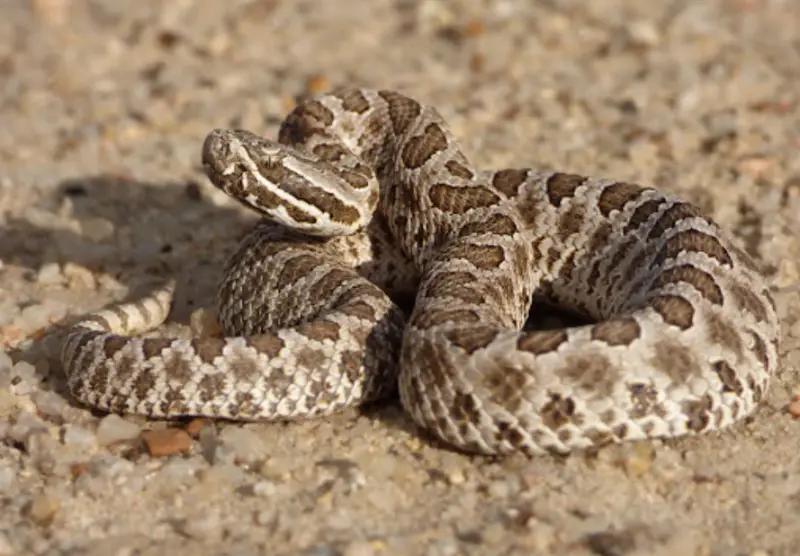
The western massasauga is a rattlesnake species found throughout the Midwest, ranging from southern Ontario, Canada to northern Mexico, including western Oklahoma, except for the far northwestern part. These pit vipers have a light tan background with darker spots along their back and sides, and vertical pupils.
They can grow up to 30 inches (76 cm) in length and primarily feed on small rodents, frogs, and lizards. Western massasaugas inhabit grasslands, prairies, and can also be found near swamps, marshes, and rocky hillsides.
Prairie Rattlesnake
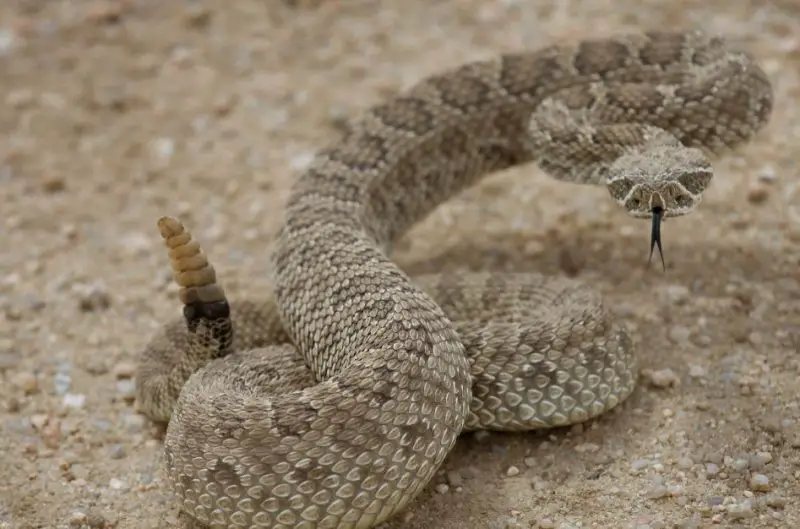
Prairie rattlesnakes are found throughout the Great Plains, thriving in open grasslands and prairies but also inhabiting forested areas. They have the largest range of any rattlesnake species, extending from Canada to Mexico. In Oklahoma, they are present in the western regions, including the Oklahoma Panhandle.
These pit vipers have flat bodies and can grow up to 5 feet (1.5 m) long, with most adults averaging 3-4 feet (0.9-1.2 m). Their color varies from brownish-gray to tan, with darker circular blotches along their back and sides.
Western Diamond-Backed Rattlesnake
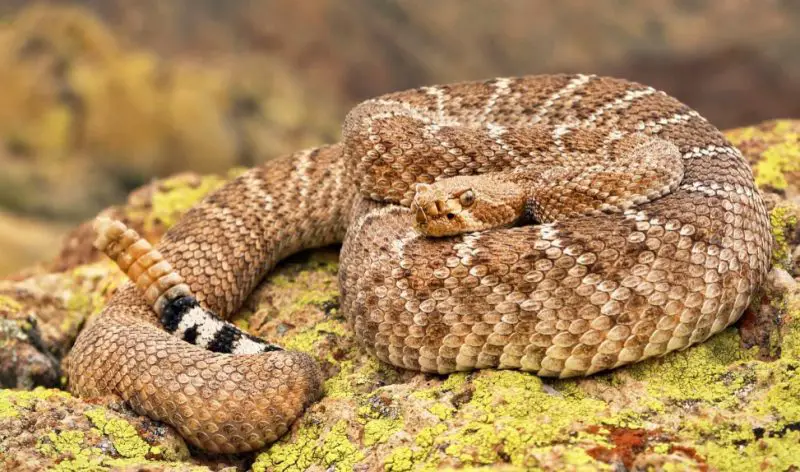
The western diamond-backed rattlesnake is the last venomous snake species found in Oklahoma. It is easily recognized by the distinctive black and white bands at the end of its tail, just before the rattle.
These rattlesnakes typically have a light brown, tan, or grayish-brown color with diamond-shaped blotches along their spine, bordered by lighter scales. Their populations are scattered across Oklahoma, particularly in the mid to southeastern and southwestern regions, as well as in Chickasaw Nation and Woodward County.
Non-venomous Snakes in Oklahoma
Plain-Bellied Watersnake

The plain-bellied watersnake is a heavy-bodied species that can grow up to 48 inches (122 cm) long. With an olive background mostly covered in dark brown to black blotches and heavily keeled scales, their appearance can easily lead to confusion with cottonmouths.
These snakes thrive in aquatic habitats, including wetlands, ponds, lakes, streams, and rivers, primarily feeding on amphibians and tadpoles. Plain-bellied watersnakes are found throughout the entire state of Oklahoma.
Prairie Kingsnake
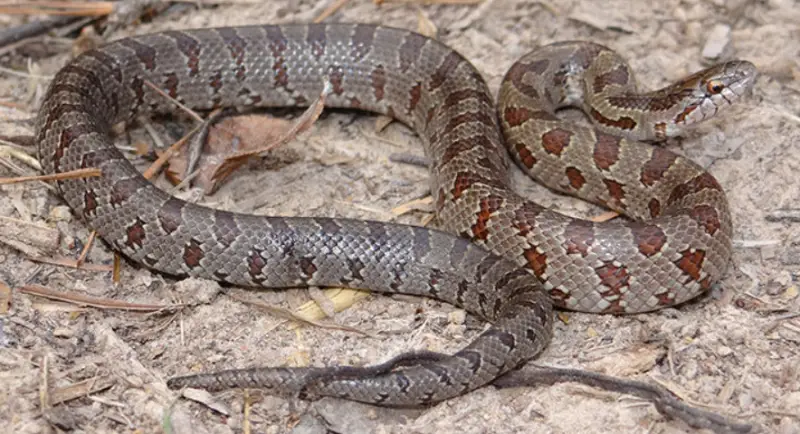
Prairie kingsnakes are found throughout Oklahoma, except in the western half of the Oklahoma Panhandle. These medium-sized snakes typically range from light brown to brown, featuring rectangular dark to reddish-brown blotches along their spine and smaller, round blotches on their sides that alternate with the spinal blotches.
They average 30-48 inches (76-122 cm) in length and are primarily terrestrial, preferring habitats such as farmlands, prairies, fields, and open woodlands.
Ring-Necked Snake

The ring-necked snake is named for the distinctive yellowish-orange to orange ring around its neck, which matches its underbelly that is also speckled with black spots. Their background color is typically light brown, gray, or black.
In Oklahoma, there are two subspecies: the Prairie ring-necked snake, more common throughout the state except in the southern part of McCurtain County, and the Mississippi ring-necked snake, found only in southern McCurtain County. These small snakes reach up to 14 inches (36 cm) in length and inhabit various terrestrial environments, including open woods and prairies.
Rough Greensnake

The rough greensnake is a vibrantly colored species found in central and eastern Oklahoma. These slender snakes are bright green to yellow-green, with a pale yellow to white belly, and can reach up to 4 feet (1.2 m) in length.
They prefer to hide among trees, bushes, shrubs, and vines, using their brilliant coloration for camouflage as they blend in with leaves. Their diet mainly consists of insects like caterpillars, grasshoppers, and crickets, as well as spiders, and they are excellent climbers.
Speckled Kingsnake

The speckled kingsnake, also known as the common kingsnake, is characterized by its distinct color pattern of a black body adorned with small yellow specks. Its belly is typically yellow to cream-colored, sometimes featuring blotches.
These medium to large-sized snakes average between 36-48 inches (91-122 cm) in length. Their range covers most of Oklahoma, excluding the westernmost corner of the Oklahoma Panhandle, where they are less common.
Western Worm Snake
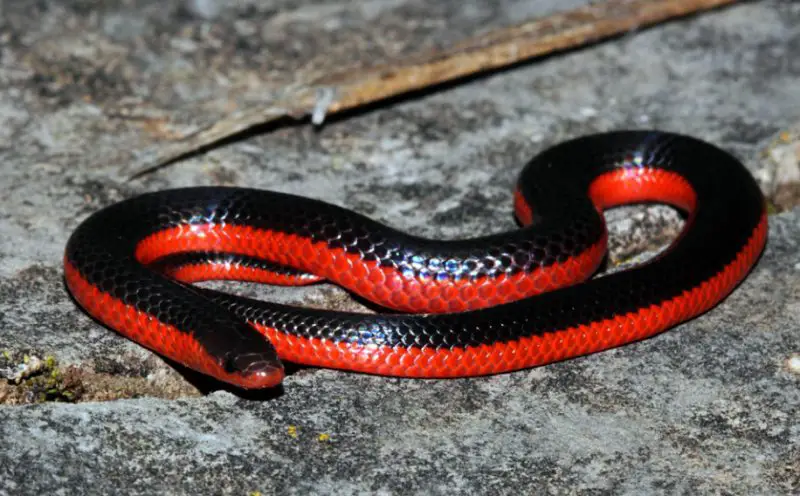
Western worm snakes are very small, with mature adults typically measuring no more than 11 inches (28 cm) in length. They have a dark brown to brownish-purple color on top and a bright red or pink underbelly that extends up the sides.
Preferring moist woodland habitats and grassy hillsides, these snakes often hide under leaf litter and rotting logs. Their diet mainly consists of small insects, centipedes, and earthworms. They are primarily found in eastern Oklahoma.
Great Plains Rat Snake
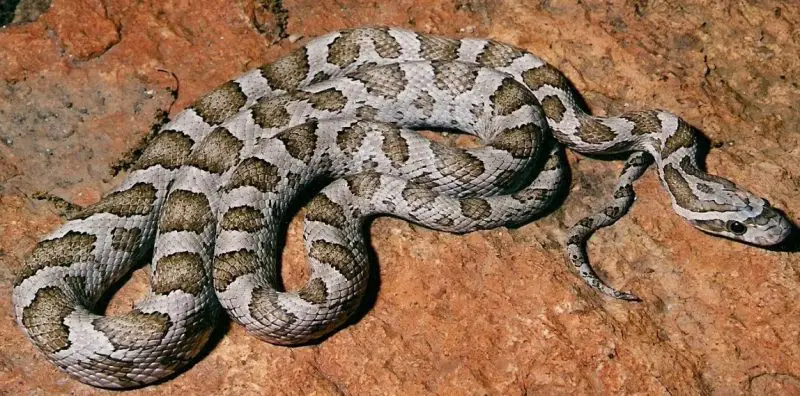
The Great Plains rat snake is found in most regions of Oklahoma, except for the southeastern corner. It features a light brown or tan background with dark brown rectangular blotches and smaller round blotches on its sides.
These snakes typically inhabit areas around barns, abandoned buildings, and wooded regions, feeding on a variety of prey, including rodents, birds, and bats. Most active at night, they may vibrate their tails when threatened or excited.
Western Mud Snake
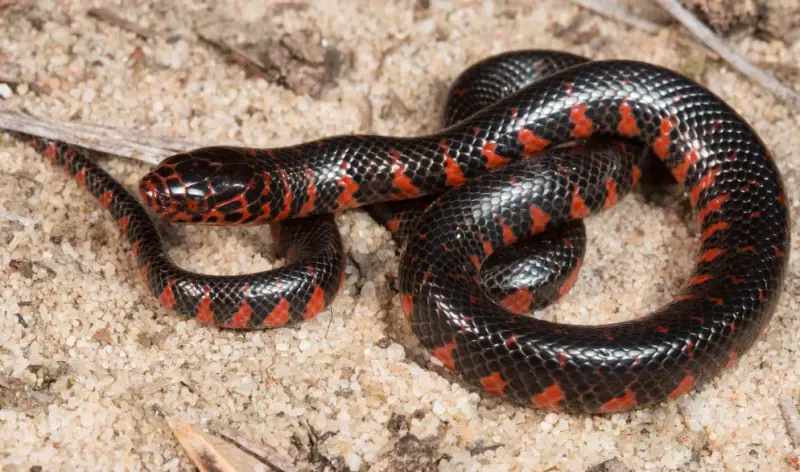
The western mud snake is a glossy black snake with a bright red or pink underbelly featuring alternating black bars, which can be seen from the sides. These fairly large snakes can reach up to 60 inches (152 cm) in length.
They are primarily found in the southeasternmost corner of Oklahoma and prefer wet and moist habitats, including swamps, slow-moving streams, and floodplains. Their diet mainly consists of amphibians and crayfish.
Western Rat Snake
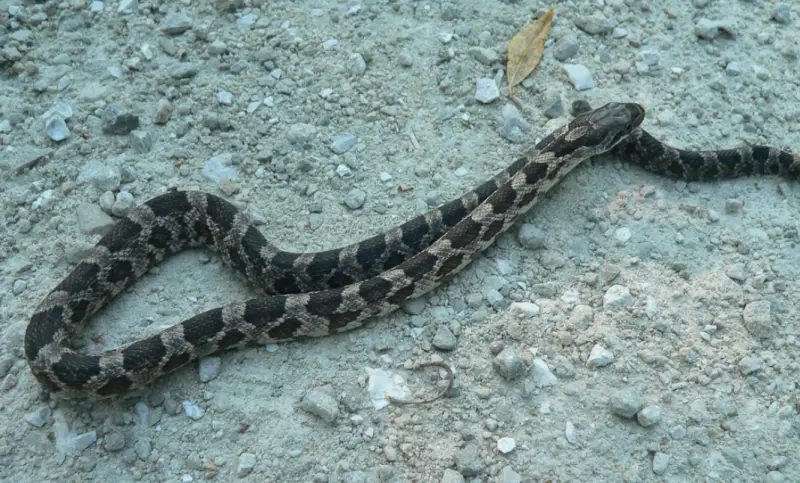
Western rat snakes are characterized by their reddish-brown to brown coloration, adorned with dark brown to black blotches along the spine, though lighter brown blotches may also be present but are harder to see.
They thrive in diverse terrestrial habitats, including farmlands and rocky hillsides, and are excellent climbers, often preferring wooded areas. This species is scattered across the Great Plains region, while southern Oklahoma hosts a different color variation known as the Texas rat snake.
Variable Groundsnake
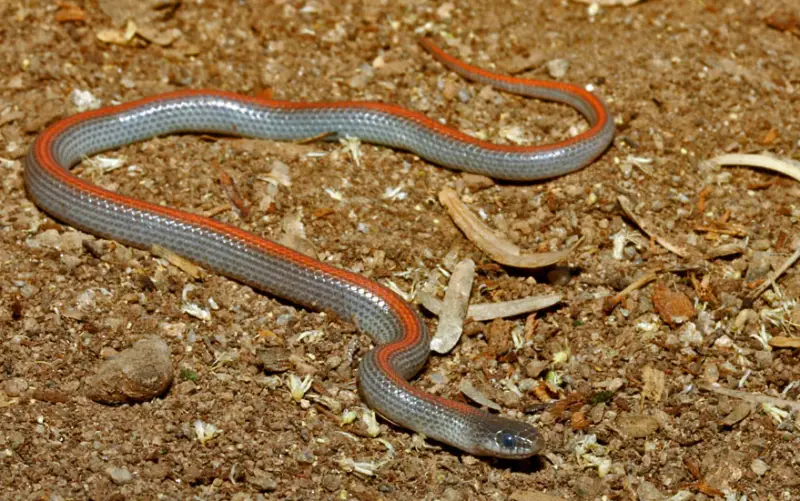
Variable groundsnakes can be challenging to identify due to their diverse color patterns. Some individuals are orangish-brown to brown with no visible markings, while others may feature a reddish-orange stripe along the spine or dark bands down the body.
These small snakes typically reach about 15 inches (38 cm) in length, with some smaller individuals measuring only 8 inches (20 cm). Their distribution across Oklahoma is scattered, found in central and southwestern regions, the southeastern corner, and parts of the north to northeastern region, as well as the far western corner of the Panhandle.
Blind Snake
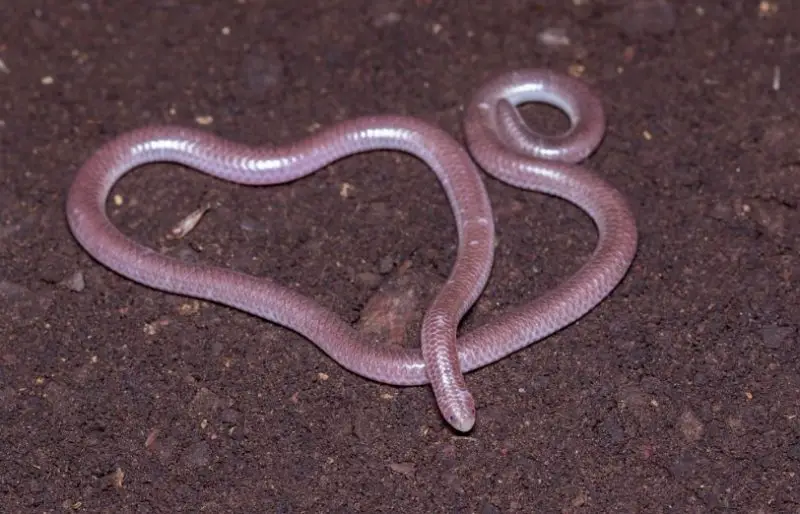
Oklahoma is home to two subspecies of blind snake: the New Mexico blind snake, found in the northwestern portion, and the Plains blind snake, which inhabits the southwestern region. These nocturnal snakes spend most of their time underground and hibernate during the winter, primarily feeding on insects like termites and ants.
Their appearance resembles that of a large earthworm, typically measuring no more than 12 inches (30.5 cm) in length, and they range in color from pale pink to purplish-brown, with small eyes.
Glossy Water Snake

Glossy water snakes, also known as glossy crayfish snakes or striped water snakes, inhabit the Coastal Plain region of the U.S., primarily found in southeastern Oklahoma.
These heavy-bodied snakes average about 16 inches (40.6 cm) in length, featuring an olive brown body with a yellow or tan to cream underside, and yellow coloration around their mouth. As a semi-aquatic species, they prefer habitats with abundant crayfish populations.
Coachwhip Snake
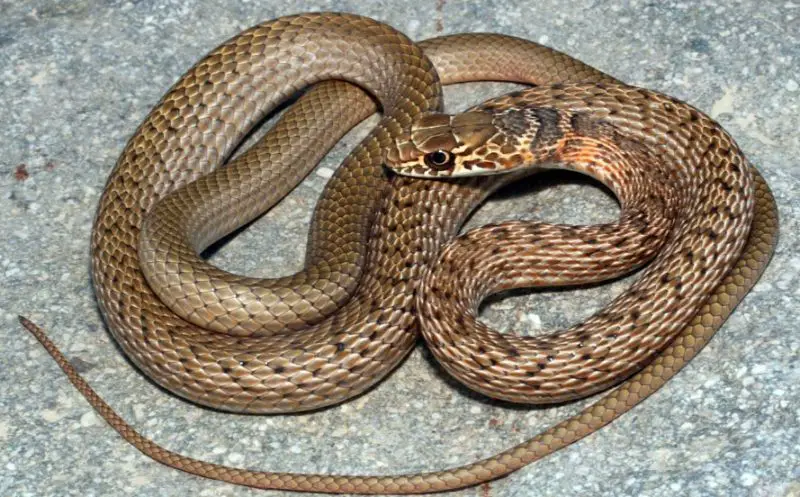
The coachwhip snake displays various color variations depending on its region. The eastern coachwhip resembles an eastern black racer, being uniformly black above with a white to tan underbelly. In contrast, the western coachwhip is light orangish-tan to sandy, with striking patterns of dark zig-zagged bands in juveniles.
These snakes can range in size from 36 to 82 inches (91-208 cm) in length. They are found throughout Oklahoma, with eastern coachwhips located east of Interstate 35 and western coachwhips to the west.
Western Smooth Earth Snake

Western smooth earth snakes are adept at blending in with leaf litter and red soils, displaying a uniform reddish-brown or orangish-brown color with a cream to yellow underbelly. Some individuals may have a faint stripe along the spine, while regular smooth earth snakes tend to be more gray.
These small snakes typically reach lengths of 7-10 inches (18-25 cm) and primarily feed on small insects and invertebrates. They inhabit the southeastern region of Oklahoma, preferring various wooded habitats, including damp woodlands and wooded hillsides.
Long-Nosed Snake
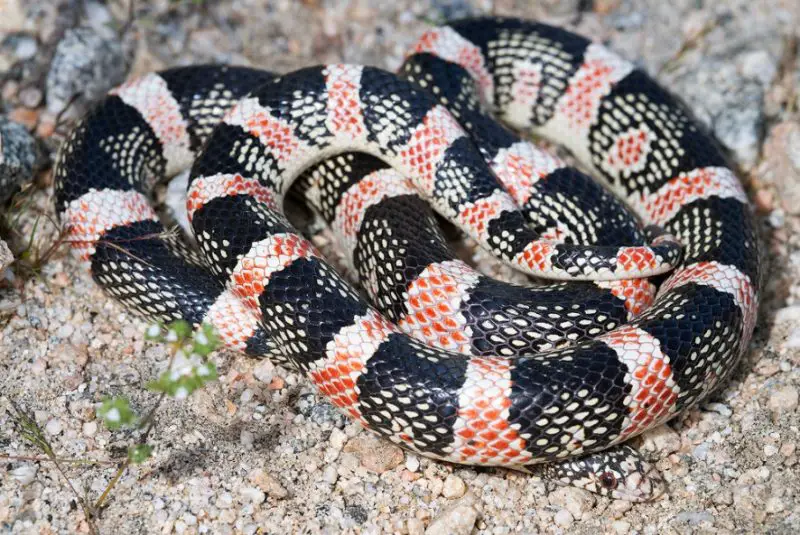
The long-nosed snake is primarily found in the northwestern and southwestern corners of Oklahoma, including the Oklahoma Panhandle. These snakes exhibit a unique color pattern, featuring a cream to pale yellow background adorned with rectangular black blotches, creating a speckled appearance.
They may also have red to reddish-orange scales between the bands and at the neck. Active mainly at night, long-nosed snakes inhabit dry terrestrial environments, such as desert brushland and prairies. Although harmless, they can eject a mixture of feces, musk, and blood as a defense mechanism if threatened.
Common Gartnersnake
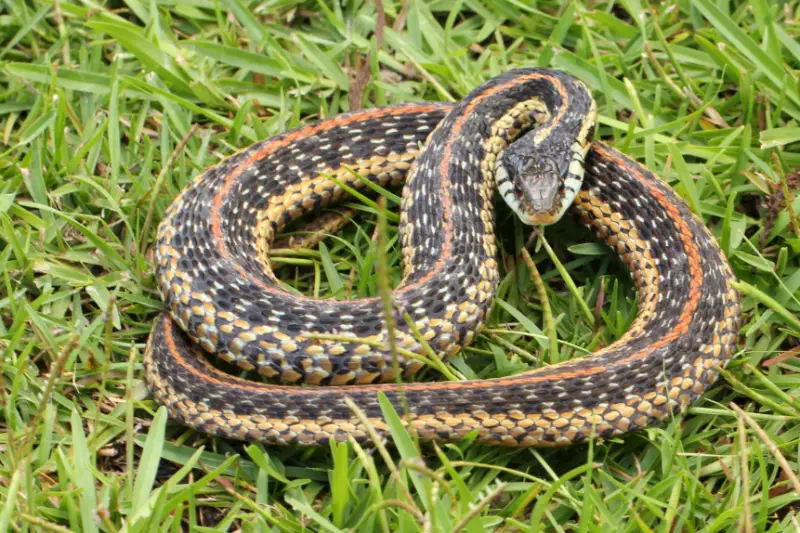
Oklahoma is home to two types of common gartersnakes, distinguished by their color variations. The common gartersnake features a black head and a black background, occasionally with brown scales, and has a yellow to pale yellow stripe along the spine, with pale yellow stripes and black speckles on the sides.
In contrast, the red-sided gartersnake has similar patterns but sports a reddish-brown coloration instead of yellow. The red-sided variety is found in parts of central and eastern Oklahoma, while the common gartersnake is more widespread, excluding the Oklahoma Panhandle and southwestern region.
Texas Brown Snake

The Texas brown snake is closely related to the Dekay’s brown snake, exhibiting a reddish-brown to brown coloration with dark brown specks on its body. Some individuals may display a faint stripe along the spine and sides.
Their range in North America primarily spans the Great Plains, extending from southern Minnesota to Texas and northeastern Mexico. Texas brown snakes are often seen in gardens and backyards, as well as in moist woodlands, where they hide under rotting logs.
Flat-Headed Snake
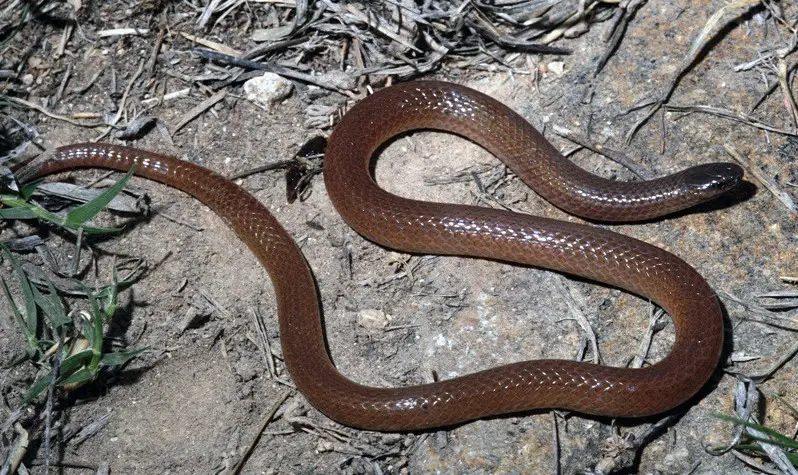
The flat-headed snake resembles a worm snake, typically displaying light brown, tan, or rusty coloration. Its head is often dark brown to black, with a white underbelly featuring a thick orange stripe down the center.
These small snakes average no more than 8 inches (20 cm) in length and primarily feed on small invertebrates and insects. Flat-headed snakes are found in the central and eastern regions of Oklahoma but are absent from the western part of the state and the Oklahoma Panhandle.
Wandering Garter Snake
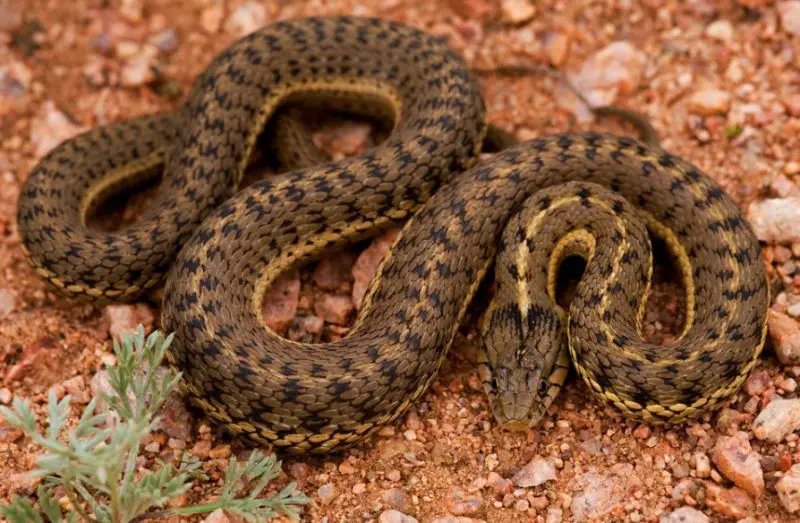
Wandering garter snakes are found in the western region of North America, exhibiting colors that range from gray to brown, often with dark spots along the spine and sides. A light-colored line may be visible along the spine.
Although they possess venom, it is primarily used against small prey like mice, which they typically constrict. In Oklahoma, this species is limited to the Panhandle, preferring woodlands, grasslands, and forested habitats.
Western Ribbon Snake

The western ribbon snake is a type of garter snake with several subspecies, including the orange-striped ribbon snake. They typically have a dark brown to black background color, adorned with an orange to reddish-brown stripe down the spine and yellow or cream stripes on each side.
Some individuals may show a bluish-green coloration on the side of the neck. These snakes inhabit a variety of environments near water and are common throughout most areas of the south-central US.
Plains Garter Snake
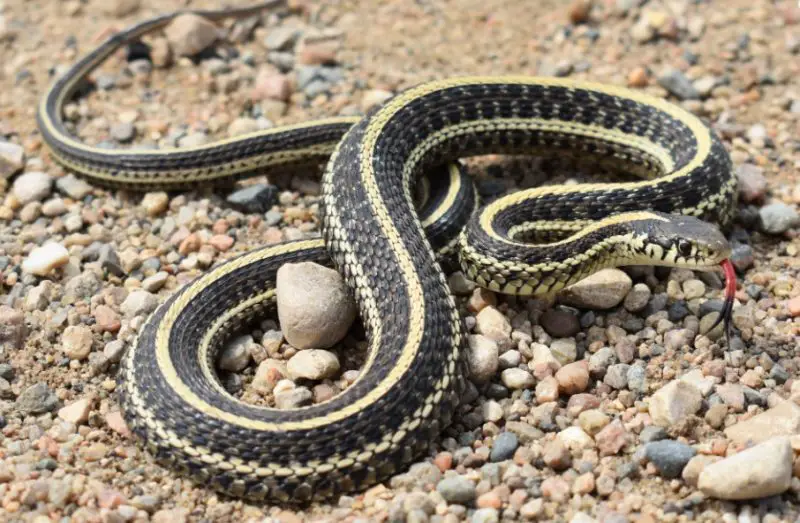
The Plains garter snake resembles other garter snake species, featuring a distinct pale orange spinal stripe and pale yellow sides with black blotches over a dark brown to black background.
They thrive in various habitats, including marshes, farmlands, open woodlands, damp woodlands, and meadows. While garter snakes are widespread across the United States, Plains garter snakes are limited to the northwestern corner of Oklahoma, particularly in the Oklahoma Panhandle.
Lined Snake
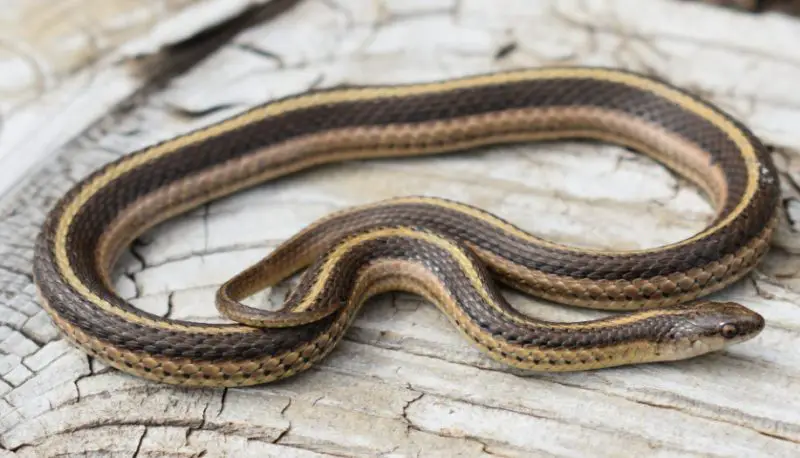
The lined snake is a small species, measuring 7-16 inches (18-41 cm) in length. Its coloration varies, with some being sandy brown and others gray or grayish-brown, featuring a light tan, cream, or gray line along the spine.
Lined snakes primarily inhabit central Oklahoma, with a small population in the westernmost Oklahoma Panhandle. They thrive in prairies, wooded areas, and suburban settings but are often hidden due to their nocturnal nature, frequently found under debris.
Broad-Banded Water Snake
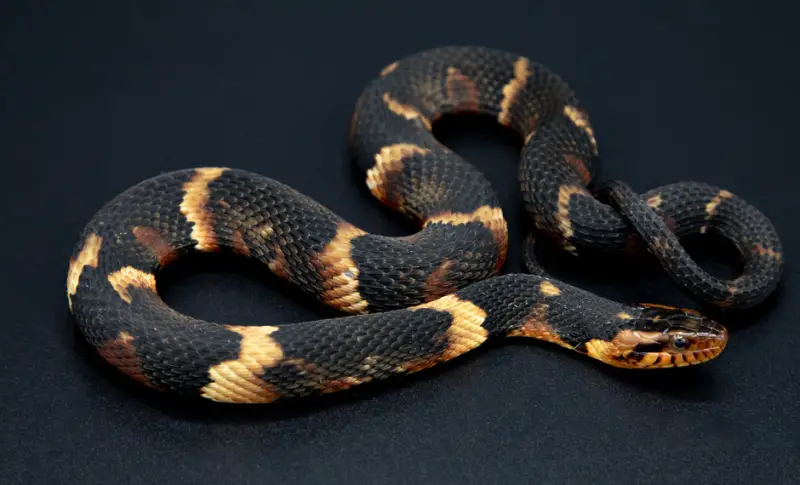
The broad-banded water snake is an aquatic species found in southeastern Oklahoma. These heavy-bodied snakes are cream to golden orange in color, with wide, dark bands covering much of their body. They have a yellow underside with dark alternating blotches and can reach up to 60 inches (152 cm) in length.
Preferring habitats near permanent bodies of water like streams, rivers, swamps, ponds, and lakes, they primarily feed on fish, tadpoles, and frogs. Broad-banded water snakes are most active at night between March and October and can sometimes be seen basking on rocks or logs near water in the early morning.
Plains Black-Headed Snake
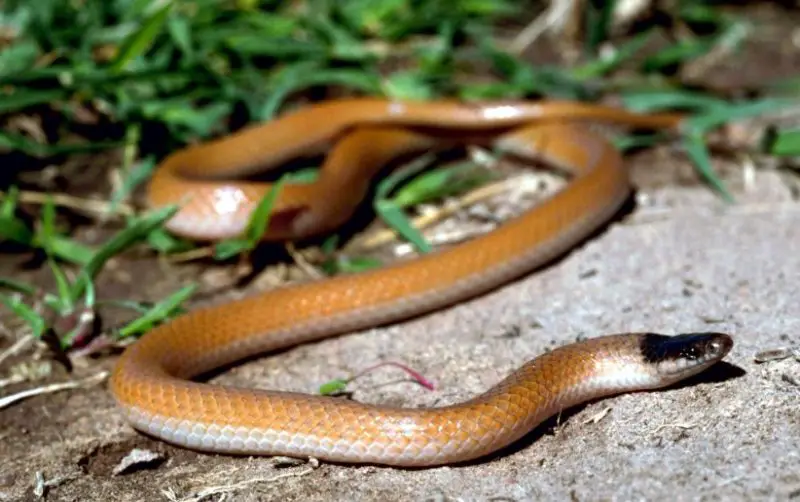
The Plains black-headed snake is found in the western half of Oklahoma, including the Oklahoma Panhandle, inhabiting moist terrestrial habitats like rocky and grassy hillsides. Named for their dark brown to black heads, these snakes often have bodies that are rusty brown or grayish brown.
They typically reach lengths of 7-12 inches (18-31 cm) and possess mild venom used to hunt small prey.
Bullsnake
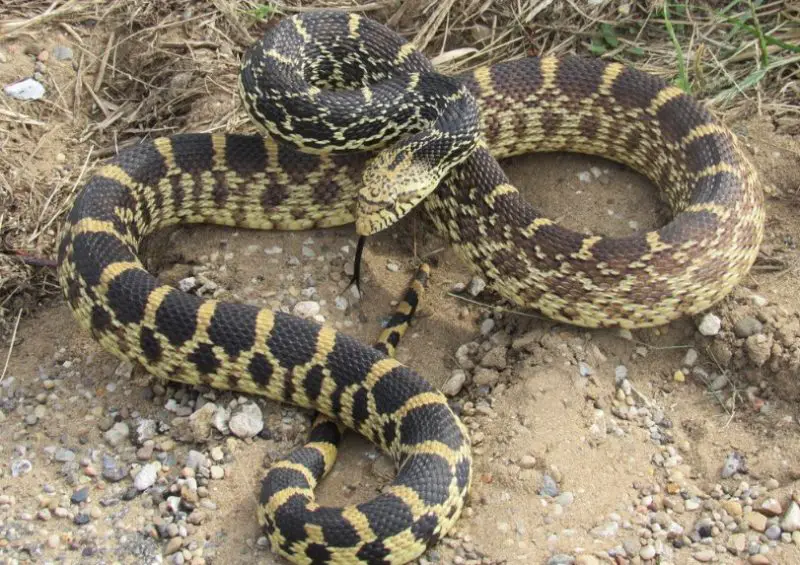
The bullsnake is found throughout most of Oklahoma, except for the central eastern and southeastern areas. They typically display sandy brown to cream coloration with dark or reddish-brown blotches.
These large snakes can reach lengths of up to 72 inches (183 cm) and are diurnal, preying on birds, lizards, and small mammals. Their preferred habitats include fields, prairies, open brushland, and pine-oak woodlands.
Scarlet Snake
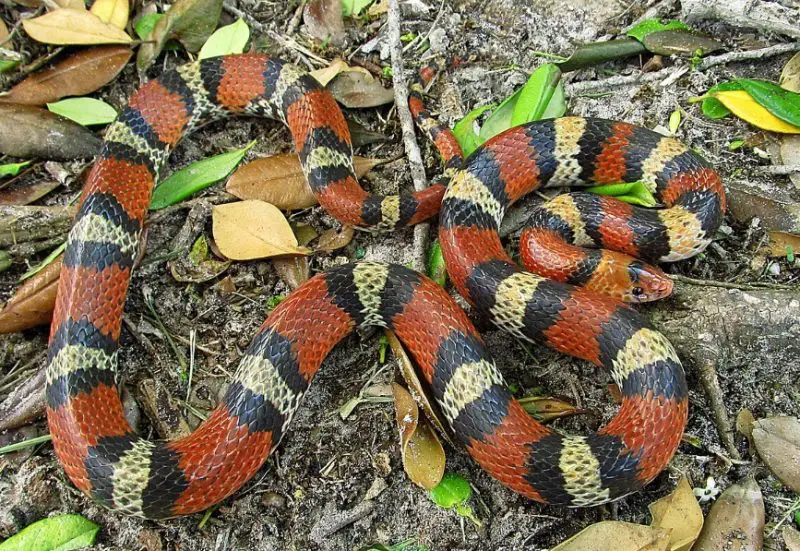
The scarlet snake features a striking coloration of black, red, and white. It has a red head and large red blotches on its back, bordered by small black blotches, with white separating them. Adults typically reach around 24 inches (61 cm) in length.
This medium-sized snake is primarily found in central and eastern Oklahoma, particularly within the Seminole Nation, Muscogee Nation, and Choctaw Nation.
Threadsnake
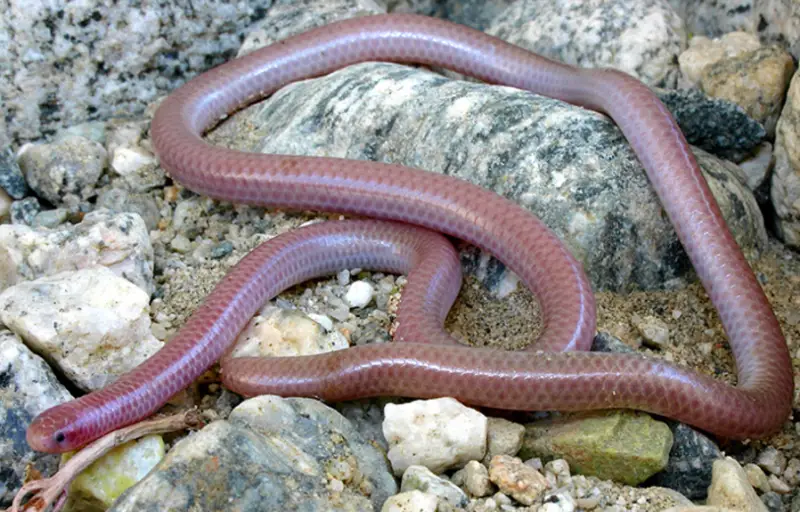
There are two types of threadsnakes in Oklahoma: the New Mexico threadsnake and the Plains threadsnake, which is a subspecies. Both are very small, averaging about 5-10 inches (13-25 cm) in length, and feature a reddish-brown or pink coloration with small black eyes.
The New Mexico threadsnake is found in the northern part of central and western Oklahoma, while the Plains threadsnake occurs in the southern half of western Oklahoma. They inhabit prairies and rocky or sandy areas.
Dekay’s Brownsnake
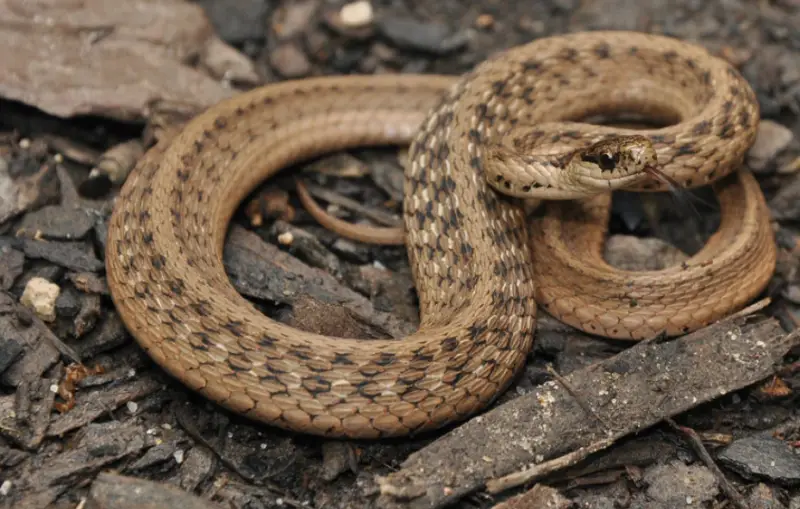
Dekay’s brownsnake is a small species, usually no more than 15 inches (38 cm) long. They range from reddish-brown to gray, with irregular blotches on their back and a smooth cream or white underbelly. Harmless to humans, these secretive snakes are rarely seen, spending most of their time hidden in crevices or logs.
Their diet consists mainly of earthworms and insect larvae. Dekay’s brownsnakes are found throughout most of Oklahoma, except in the Panhandle and southwestern regions.
Eastern Hognosed Snake
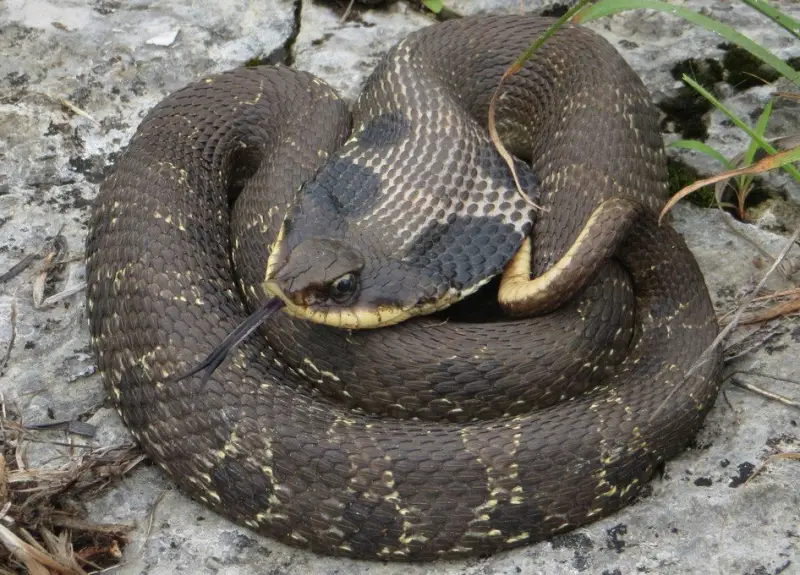
The eastern hognose snake is named for its distinctive upturned snout. Known for their dramatic threat displays, they may hiss and flatten their heads like a cobra but are harmless. When threatened, they often play dead and emit an unpleasant odor.
Their diet mainly consists of amphibians, which they capture using mild venom. Color patterns vary from dark brown to almost black or light tan with blotches. Mature adults can reach up to 40 inches (102 cm). Eastern hognose snakes are found throughout most of Oklahoma, excluding the westernmost part of the Panhandle, inhabiting woodlands, farmlands, and sandy areas.
Racer Snake
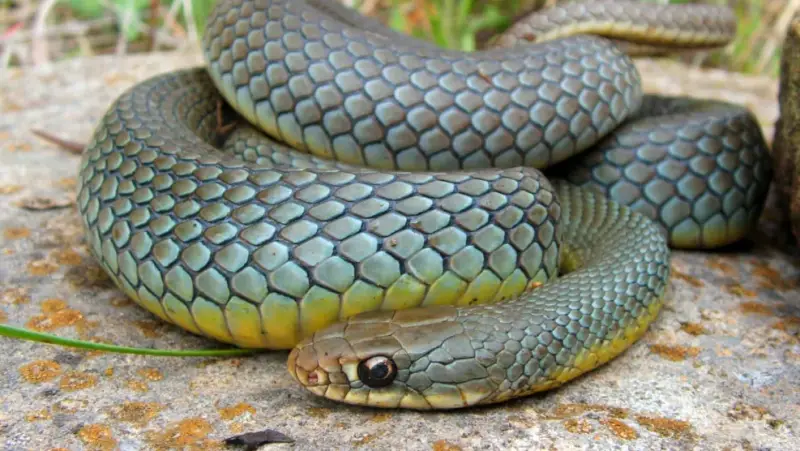
Oklahoma is home to two subspecies of racer snakes: the eastern yellow-bellied racer and the southern black racer. Eastern yellow-bellied racers have a yellow underside and brown to olive green coloring above. Southern black racers are uniformly bluish-black with a light blue or cream-colored underside, with juvenile blotches fading as they mature.
Growing up to 60 inches (152 cm), these snakes inhabit various Oklahoma environments. They help control rodent populations and also feed on insects and amphibians.
Graham’s Crayfish Snake
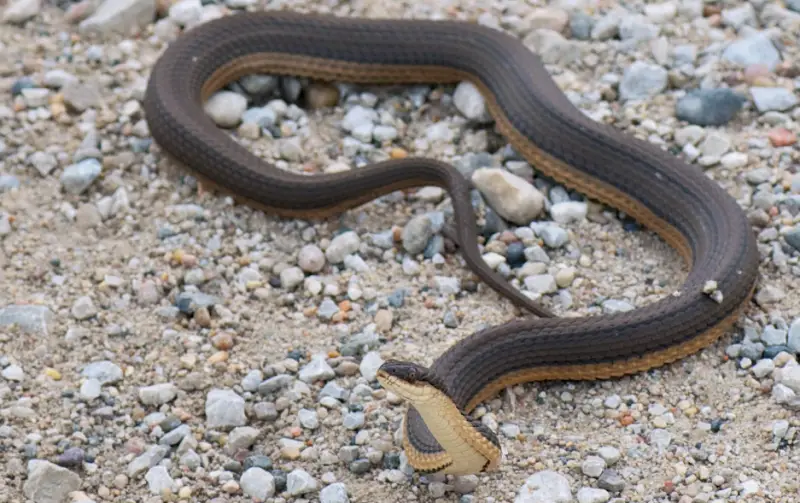
The Graham’s crayfish snake is a semi-aquatic species that prefers habitats rich in crayfish, particularly those that are soft after molting. While fairly common, they are secretive and hard to spot.
These snakes are primarily brown on top, with tan to cream-colored sides and a pale yellow or white underbelly. They can grow up to 30 inches (76 cm) long and are mainly found in central Oklahoma and along the southern border of the state.
Gulf Crayfish Snake
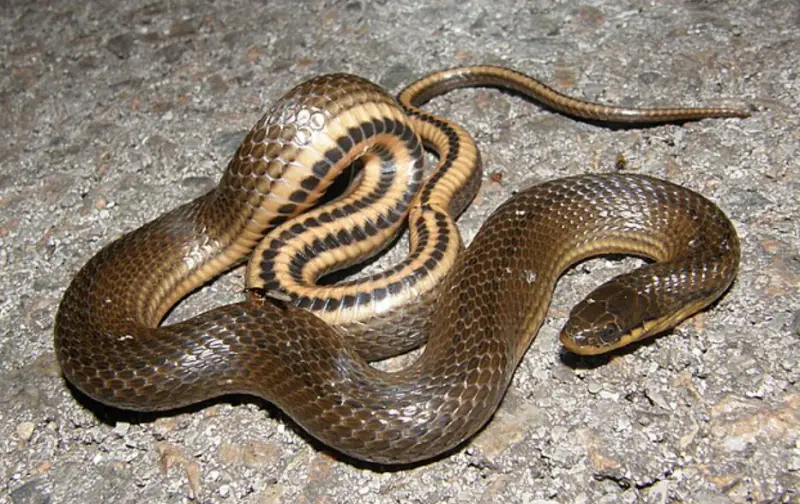
The Gulf crayfish snake is an aquatic species that thrives near permanent bodies of water, such as swamps, ponds, streams, rivers, and bogs. Primarily active at night, they can be hard to spot. Unlike the Graham’s crayfish snake, they prefer to feed on hard-shelled crayfish.
These snakes are usually dark to olive brown with yellow or cream-colored bellies and may have yellow or orange eyes. In Oklahoma, their range is limited to the southeastern region, primarily in the Coastal Plain.
Kansas Glossy Snake
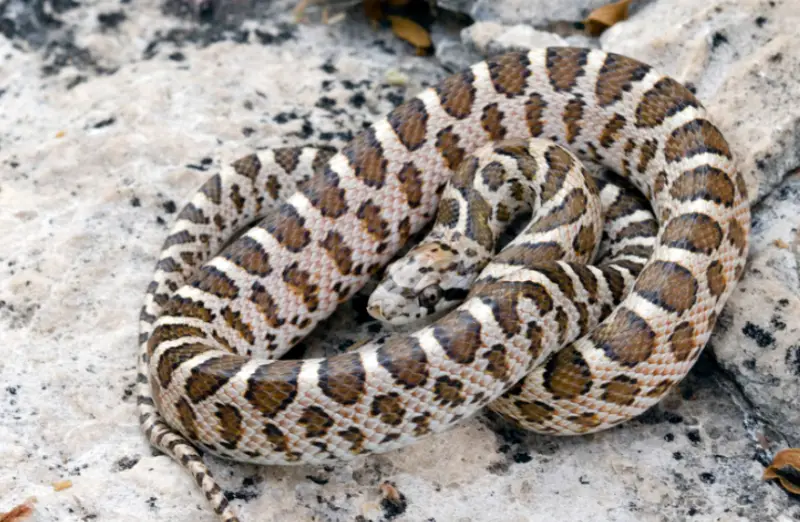
The Kansas glossy snake is a medium-sized species that can grow up to 36 inches (91 cm) long. Typically, they have a cream to light brown coloration with dark brown blotches covering their body and a uniformly white underside.
These snakes prefer open areas with sandy soils and are found in western Oklahoma and the Oklahoma Panhandle. When threatened, they may display by vibrating their tail.
Western Milksnake
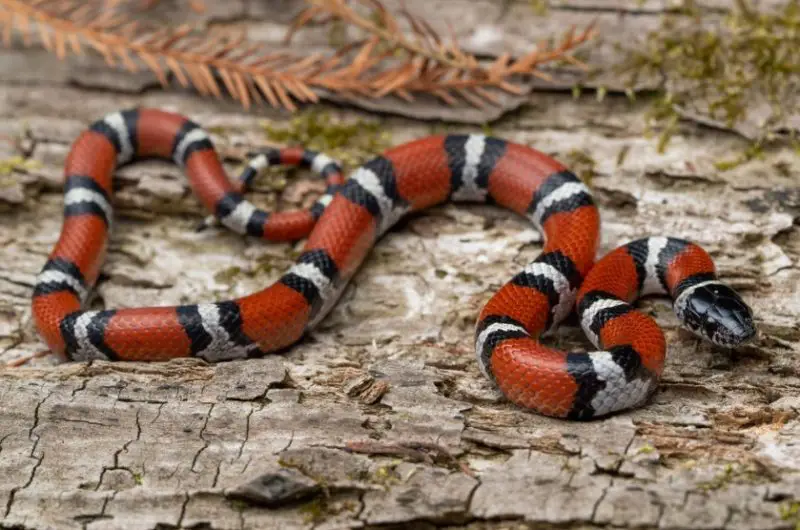
Western milksnakes are strikingly colored, featuring bright red bands bordered by thinner black bands, with cream to white bands separating the black. Despite their vivid appearance, they are harmless.
Their range is scattered throughout Oklahoma, including parts of the Panhandle and eastern and southeastern regions. Most active at night from March to October, these snakes primarily feed on reptiles and small mammals, typically reaching an average length of 24 inches (61 cm).
Northern Diamond-Backed Watersnake
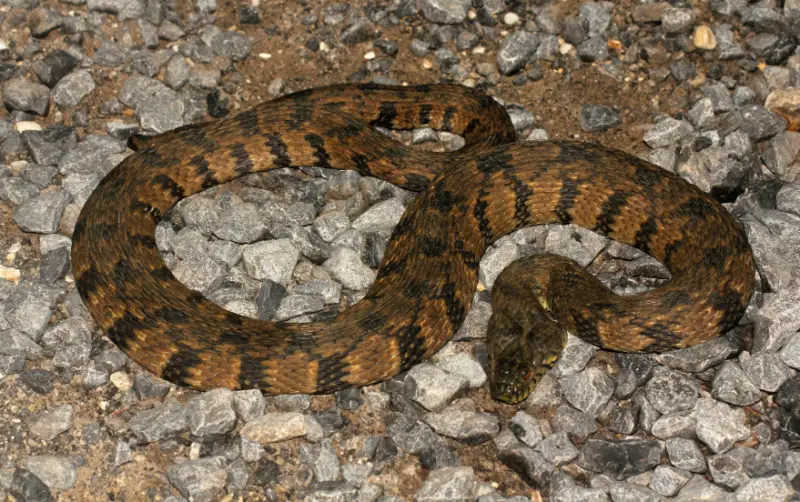
The northern diamond-backed watersnake is a large, heavy-bodied, nonvenomous snake often mistaken for the venomous western diamond-backed rattlesnake. These snakes thrive near permanent bodies of water and are found throughout Oklahoma, from the north-central and northeastern regions to the southeastern corner.
Their dark brown or olive brown coloration features alternating dark blotches along the body, which can lead to confusion with cottonmouths due to their similar habitat and appearance.
Orange-Striped Ribbon Snake
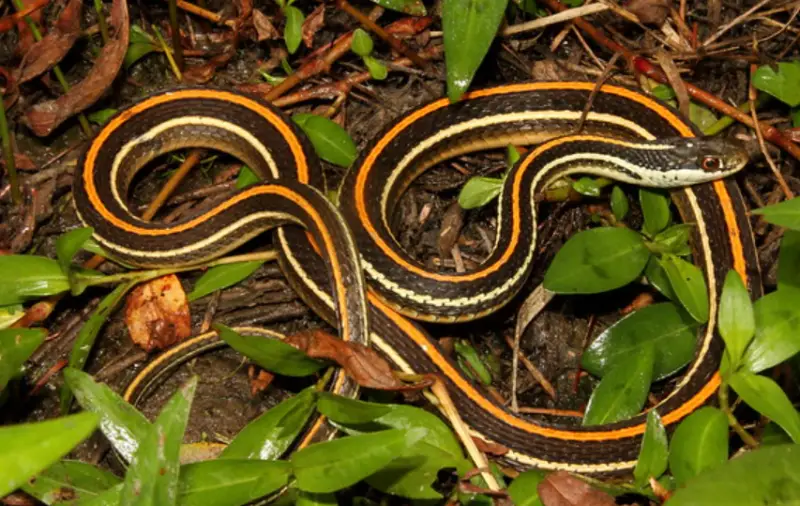
The orange-striped ribbon snake is a subspecies of the western ribbon snake and can be found in most parts of Oklahoma, except for the westernmost Panhandle. These snakes inhabit areas around swamps, ponds, and riverbanks, primarily feeding on amphibians and larvae.
While they are terrestrial, they will enter water to catch prey. Named for the distinctive orangish-yellow to orange stripe along their spine, they also feature light yellow stripes on each side and a cream to light yellow belly.
Rough Earth Snake
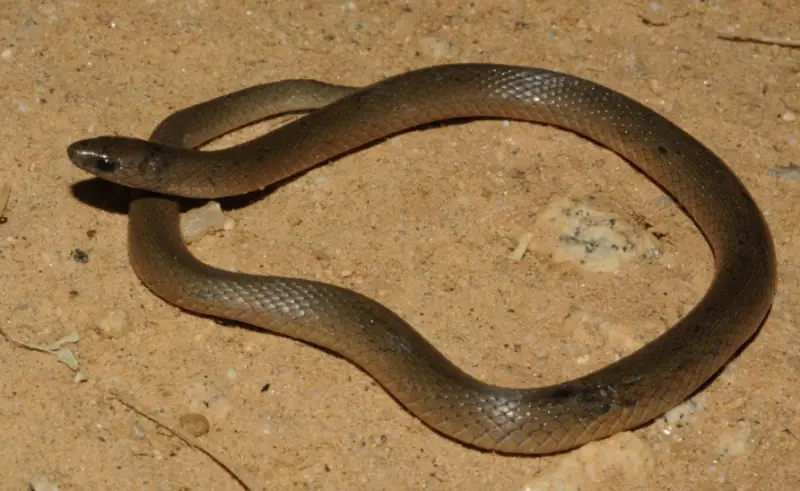
Rough earth snakes have glossy dark brown to grayish-black scales with a white or cream underbelly. Juveniles may show a light band at the head base. Adults typically reach up to 10 inches (25 cm) in length.
These snakes are found in the eastern half of Oklahoma, extending into the south-central region, and they prefer habitats like woodlands and rocky hillsides.
Northern Red-Bellied Snake

Northern red-bellied snakes are gray to grayish-brown with small dark spots and a darker head. They feature a pale orange neck ring and are named for their red to orange underbelly. Adults can reach up to 14 inches (36 cm), while juveniles are about the size of a large earthworm.
Their range is fragmented in eastern Oklahoma, mainly concentrated in the southeastern corner, where they inhabit damp woodlands with ample cover.
Marcy’s Checkered Garter Snake
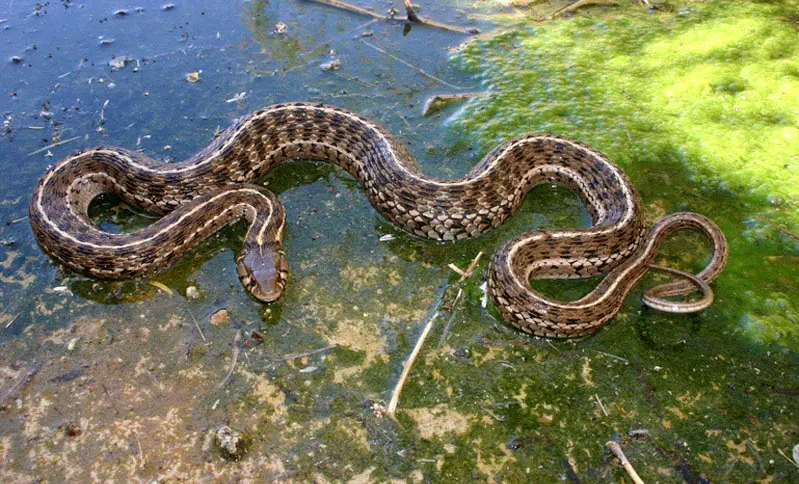
Marcy’s checkered garter snake has a lighter background color, ranging from cream to light tan, with prominent dark brown, square-shaped blotches that create a checkered appearance. It features a light cream stripe down its spine and can grow up to 36 inches (91 cm) long.
This species is found in southwestern and northwestern Oklahoma, as well as parts of the Oklahoma Panhandle, preferring dry grasslands near water sources. They are diurnal but hunt in the evening to avoid the summer heat.
Western Black-Necked Garter Snake
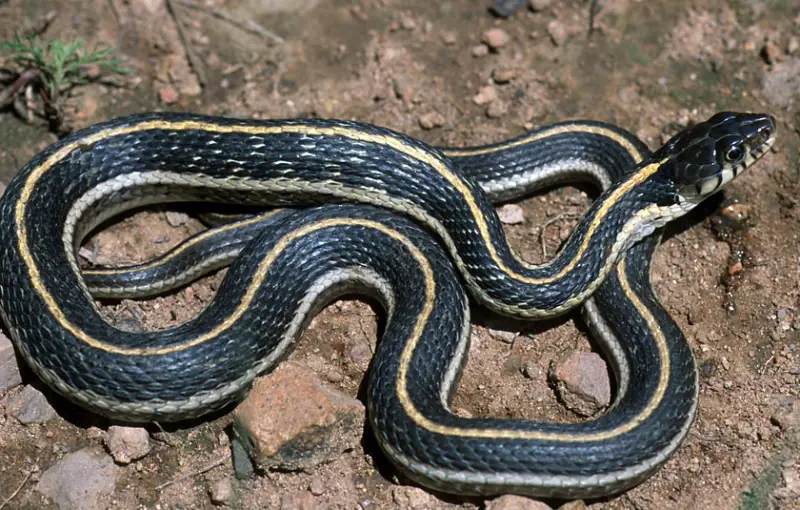
Western black-necked garter snakes are found in the northwestern corner of the Oklahoma Panhandle. They can grow up to 42 inches (107 cm) long and have a dark brown to black background with an orangish-yellow stripe along the spine.
These snakes prefer habitats such as dry grasslands, desert scrub, and woodlands. They are primarily located in the southwestern region of the US.
Texas Night Snake
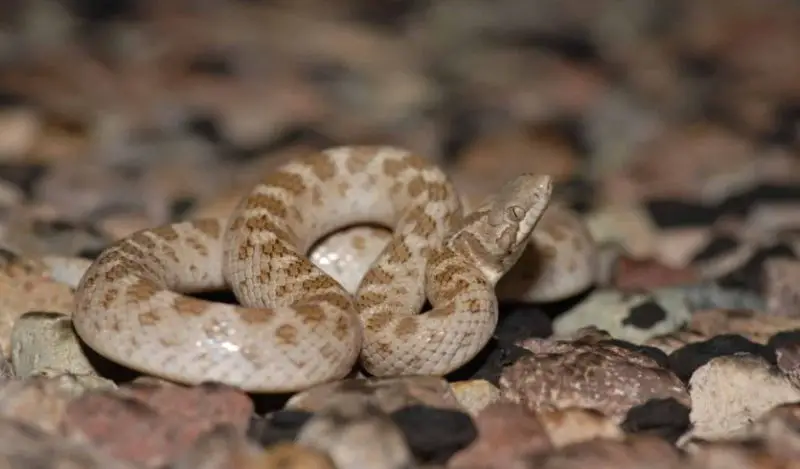
Texas night snakes, also known as Chihuahuan night snakes, are found in the western part of the Oklahoma Panhandle and the southwestern region of the state, with a small portion of their range in northwestern Oklahoma.
They prefer rocky soil habitats. Their coloration varies from reddish-brown to gray, featuring a series of round, alternating blotches along the spine and sides.





